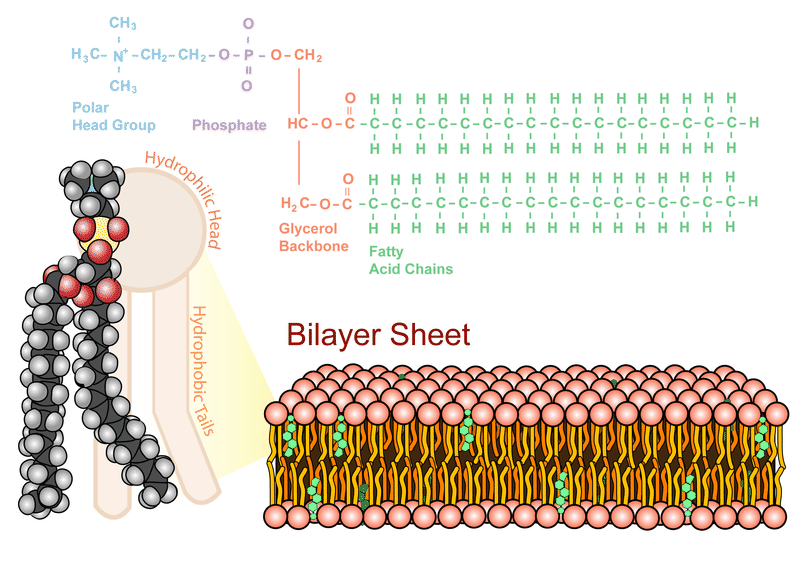READ: The Plasma Membrane
A Phospholipid Bilayer
A Phospholipid Bilayer
The plasma membrane is composed mainly of phospholipids, which consist of fatty acids and alcohol. The phospholipids in the plasma membrane are arranged in two layers, called a phospholipid bilayer. As shown in Figure below, each phospholipid molecule has a head and two tails. The head “loves” water (hydrophilic) and the tails “hate” water (hydrophobic). The water-hating tails are on the interior of the membrane, whereas the water-loving heads point outwards, toward either the cytoplasm or the fluid that surrounds the cell.
Molecules that are hydrophobic can easily pass through the plasma membrane, if they are small enough, because they are water-hating like the interior of the membrane. Molecules that are hydrophilic, on the other hand, cannot pass through the plasma membrane—at least not without help—because they are water-loving like the exterior of the membrane, and are therefore excluded from the interior of the membrane.
| A phospholipid consists of a head and a tail. The “head” of the molecule contains the phosphate group and is hydrophilic, meaning that it will dissolve in water. The “tail” of the molecule is made up of two fatty acids, which are hydrophobic and do not dissolve in water. |
|---|
